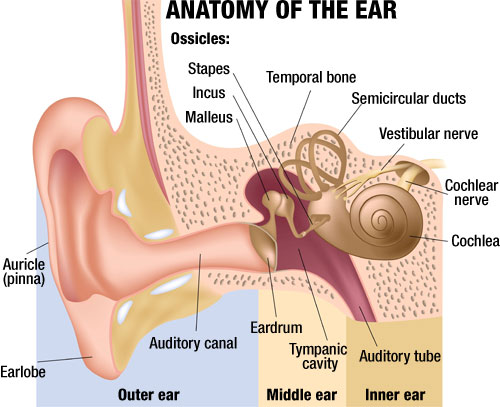Eustachian Tube Dysfunction
 |
Arthur Wu, MDArthur Wu, MD Board Certified Otolaryngologist and Fellowship-trained Rhinologist at Cedars-Sinai Medical Center Fellow of the American Rhinologic Society www.beverlyhillssinus.com About the author: As the head of the Beverly Hills Sinus Institute, Dr. Wu has a passion for helping patients with nasal and sinus problems. His advanced training has given him the skills to treat the most difficult of sinus cases, and a large volume of his patients are those that have failed medical treatment or had previous unsuccessful sinus surgery. |
Eustachian tube dysfunction is one of the most common complaints an Ear, Nose,& Throat surgeon sees in his or her clinic. Patients with eustachian tube dysfunction may complain of ear pressure, muffled hearing, and ear popping or clicking. The eustachian tube is a tube connecting the ear with the nasal cavity. When you yawn or swallow, the eustachian tube opens and pressure equalizes between the ear and the outside world. Like the nasal cavity, the ear also produces mucus and is normally drained by the eustachian tube. If the eustachian tube does not function normally, mucus may build up in the ear causing hearing loss and muffled hearing. It may also lead to recurrent ear infections. Conditions such as nasal allergy and chronic sinusitis can cause inflammation of the eustachian tube and lead to dysfunction. Medical treatment includes nasal steroid sprays, nasal antihistamine sprays, oral antihistamines, decongestants, and saline rinses. Temporomandibular joint (TMJ) disorder can also cause similar symptoms of ear pressure and popping. An Ear, Nose, & Throat physician can help to delineate if a patient’s symptoms is from the eustachian tube or TMJ.

Patients with eustachian tube dysfunction may fail medical therapy and require surgery. Traditional treatment of eustachian tube dysfunction includes placement of a pressure equalization tube (PE tube), which simply creates a semi-permanent hole in the eardrum, allowing pressure to equalize through it directly. Normal PE tubes usually last for about a year and may need to be replaced chronically. Recent advances in technology have led to the development of a technique to help recuperate the normal function of the eustachian tube instead of circumventing it. Balloon eustachian tube dilation involves placing a guide catheter into the eustachian tube orifice. A balloon is then threaded over the guide wire and then gently inflated, dilating the eustachian tube. The dilated eustachian tube is now able to equalize pressure between the ear and the nasal cavity. Though a fairly new technique, studies demonstrate that the benefits of this type of surgery may last much longer than standard PE tubes.
Read reviews of pharmacy products and healthy food for vitamins good for people having hearing problems.
(20033)


William Bill Gramer liked this on Facebook.
Linda A Adams liked this on Facebook.
Ellen Putittity liked this on Facebook.
Ruby Faulkner liked this on Facebook.
Crystal Scofield liked this on Facebook.
Sandra Tan liked this on Facebook.
Barbara Gilchrist liked this on Facebook.
LM Hall liked this on Facebook.